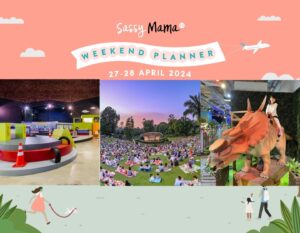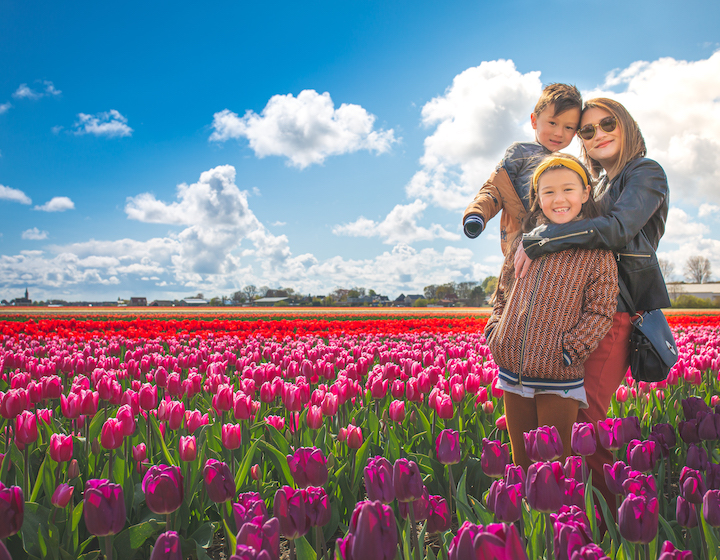
‘Dutch parents see happiness as a means to success, as opposed to success as a means to happiness. They adopt a gentle form of parenting and prefer an explanation to aggression. Corporal punishment is illegal here.’
In our latest Overseas Mama series, Singaporean Karen Lees-Tang tells us about life in Haarlem, Netherlands with her English husband and her two kids. Karen talks about being so grateful for this life where she can take her children to swim in the lake or sea, build sandcastles after school and experience the childhood she read about in Enid Blyton books. An MOE-qualified Chinese teacher with her own play-based Chinese School, Karen opens up about the monumental effort she has taken to hold on tight to her Chinese and Singaporean roots. She says “I think it is very important for my children to identify with their Singaporean and Chinese cultures! I also want them to be proud of who they are. Racism is more apparent when you are a minority in the country. If they are not proud of who they are, they won’t be able to stand up for themselves.” Get ready for a super interesting read about this family’s life in the Netherlands including how parenting differs in this part of the world – kids play in heavy rain, cycle in all weather to build resilience and there is no pressure to excel in school!
Click here to read about other Overseas Singaporean mamas!
Can you tell us a little about yourself?
I am Karen, born and raised in Singapore, and I live in Haarlem in the Netherlands with my wonderful husband, Mike, and two beautiful children, eight-year-old Maisie and six-year-old Alexander. My parents are Chinese teachers and I have five siblings. I was a Ministry of Education (MOE)-trained Chinese teacher in a primary school in Singapore for seven years before I moved to the Netherlands.
Inspired by my children’s needs, I started a play-based Chinese School, Mandarin Tree Chinese School, just before the pandemic. With multiple school closures and restrictions, I started teaching my classes online, unexpectedly opening up a lot of opportunities. Covid-19 has thrown me a curveball but it also pushed me out of my comfort zone, allowing me to grow in adversity.
It sounds cliché but I think that life is really about making lemonade out of lemons. My goal in life is to live meaningfully, leave a mark in this world, and make a change for the better, however small it may be. While I am happy to shed the trailing spouse label and be financially independent, I am also driven by passion and fulfilment, not monetary gains. It brings me pure joy to receive emails and messages from parents telling me how much I have impacted their children’s lives. This keeps me going every day.
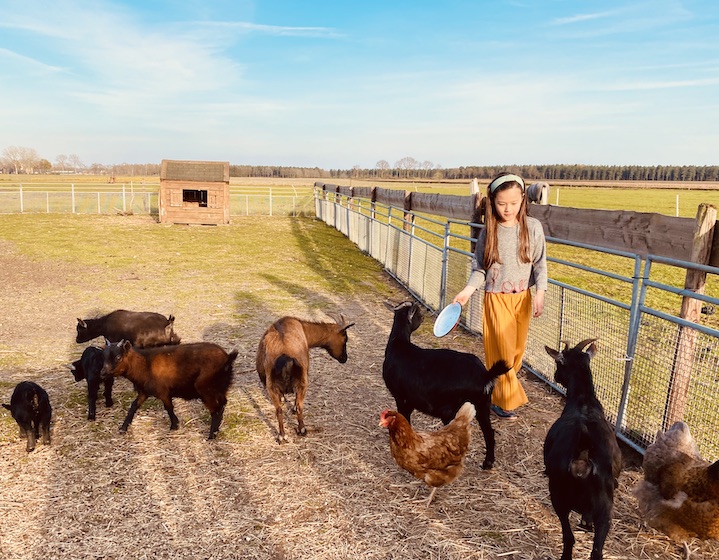
What brought you to Haarlem, Netherlands? How long have you been living overseas?
My husband and I wanted to live in a country with a better work-life balance and also a place where our children could enjoy their childhood. When my husband was offered a position as a professor at the University of Amsterdam, we jumped at the chance. In the blink of an eye, we have been living here for eight years!
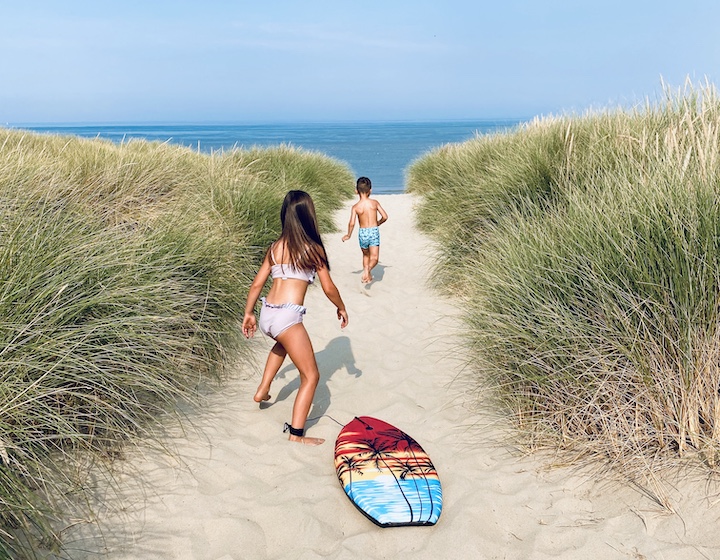
Favourite aspect about living in Haarlem?
We visited different cities in the Netherlands prior to our move and Haarlem just ticked all the right boxes for us. Haarlem is close to the dunes, the beach and the forest. It is rich in history and has really charming architecture. It is like a mini Amsterdam without the crowds of tourists and crazy tram lines. We are a 15-minute bike ride away from the dunes and a 25-minute bike ride away from the beach.
I loved being able to spontaneously take my children to swim in the lake or sea, walk in the dunes, climb trees and build sandcastles after school when the weather is nice. This is the childhood I’ve read and wondered so much about in my Enid Blyton books as a child in Singapore. I am incredibly grateful that my children are able to experience this. When we miss the hustle and bustle of city life, we hop onto a train or drive to Amsterdam, just 30 minutes away.
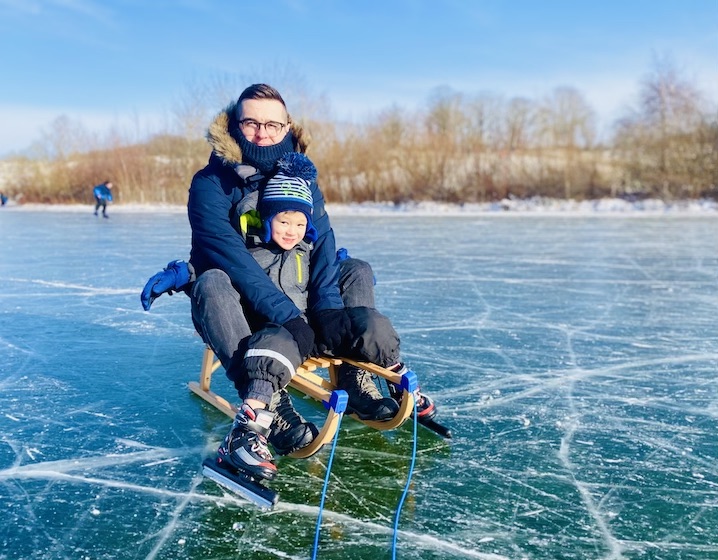
And the worst part?
The weather can be erratic here—the Netherlands in general and not just Haarlem. I recall skating on the frozen lake one day and heading out in my summer outfit the next week. It is also possible for the weather to swing drastically within a day. It wouldn’t be so bad if not for the fact that the bicycle is our main form of transportation. It can be pretty scary riding the bakfiets (cargo bike) with the kids on ice, through snow, wind, hail, and storms. I almost got blown in front of a bus last week!
According to the Dutch, cycling in all sorts of weather conditions builds character and resilience, something I am not exactly keen to prove. I remember visiting different schools when we just arrived and was surprised to see children play in heavy rain during their break. I have since learnt that there is no such thing as bad weather, only unsuitable clothing.
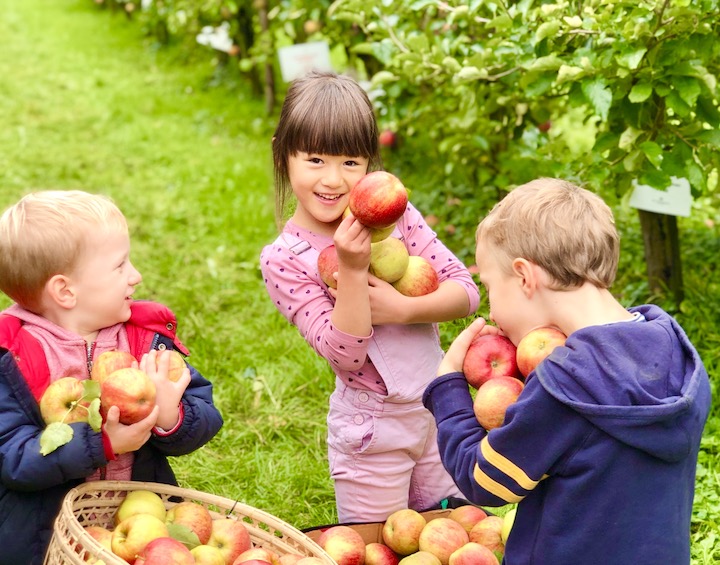
How have you and your family been coping in the midst of Covid-19?
We take it as it comes and make the best out of the situation! It was hard homeschooling my children in Dutch when their Dutch is better than ours but we managed with Google Translate! I have to admit that I have given them some wrong answers, also thanks to Google Translate, but we laugh it off and learn from my mistakes in the end. It was a rare glimpse into what our kids are learning in school, so, as stressful as it was, it was also lovely to be involved. When all indoor venues such as museums, zoos, and indoor playgrounds were closed, we started spending more family time taking walks in the forests, at the beach and in the dunes, which was really nice. We also enjoy family time together indoors, playing board games and making art when the weather is bad.
Actually, my daughter, my son and I have Covid-19 right now! We do not have family here but my friends have been amazing. I’ve had food dropped in front of my door and many friends offering support.
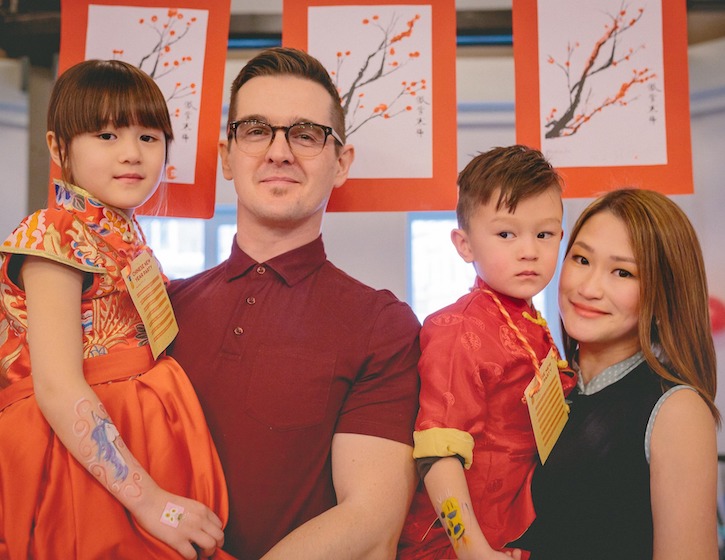
How do you think parenting in Haarlem differs from parenting in Singapore? What do you appreciate most about it?
In Singapore, you can see tuition centres everywhere, with some shopping malls dedicating a whole floor to them. When you enter the bookstore, you are hit with shelves of assessment books. There is a huge emphasis on achieving academic excellence, the main measure of parental and personal success in Singapore. A lot of time, money and effort is invested into grooming a child to do well academically with the belief that happiness will follow success. I would probably also be caught up in this wave of stress if I were to bring up my children in Singapore.
Dutch parenting is the complete opposite. Children in the Netherlands are among the happiest in the world! There is no pressure to excel in school here. Parents do not send their children for tuition classes. I haven’t seen a single tuition centre here. I am sure if you look hard enough, you’d be able to find a few. The focus is on building social skills, interests, and intrinsic motivation. My children never had homework. The only time I see workbooks taken home is when the whole book has been completed in school. Unlike in Singapore where parents are specifically told when the exams are and which topics are to be revised, schools here make it a point not to inform parents when the exams are as the additional stress is unnecessary.
I panicked a little over this uncertainty but it has taught me to let go and trust the teacher, my children, and the school system. Dutch parents see happiness as a means to success, as opposed to success as a means to happiness. It is this belief that lets me take a step back from everything I knew about education, evaluate the way Chinese is being taught in Singapore schools, and apply this new mindset to the way I teach my children and students at my play-based Chinese school.
I rarely see Dutch parents lose their cool towards a child. They adopt a gentle form of parenting and prefer explanation to aggression. Corporal punishment is illegal here. As a tiger mum raised in Singapore, I have mellowed out in the Netherlands and this has made my parenting style more balanced. Dutch people are also all about keeping to a schedule which keeps daily life running smoothly. Dinner is generally eaten early and children go to bed at around 7.30pm to ensure they have enough sleep for the next day. It is common to see children in Singapore out and about at 10pm on a school night. I know it is probably driven by circumstances but I always wonder how the children are able to cope in school the next day.
Did you give birth to your children in Haarlem? If yes, what was memorable about the experiences?
I gave birth to my daughter in Singapore before we moved here. As for my son, I was fortunate to be able to fly back to Singapore for the birth. The experiences in Singapore were amazing with quality healthcare, impeccable service, and best of all, with my family by my side.
I admire women who have given birth here in the Netherlands. Midwife-assisted births are common here, ideally at home and without medical intervention. For hospital births, I’ve heard how mothers are sent home the same day they have given birth, along with beschuit met muisjes, rusk topped with aniseed covered in sweet coating! The Netherlands also has great kraamzorg (postnatal maternity care), where a maternity aide would come to your house to provide assistance over eight to 10 days after childbirth. It is a little like having a confinement nanny in Singapore, except that kraamzorg is covered by health insurance here.
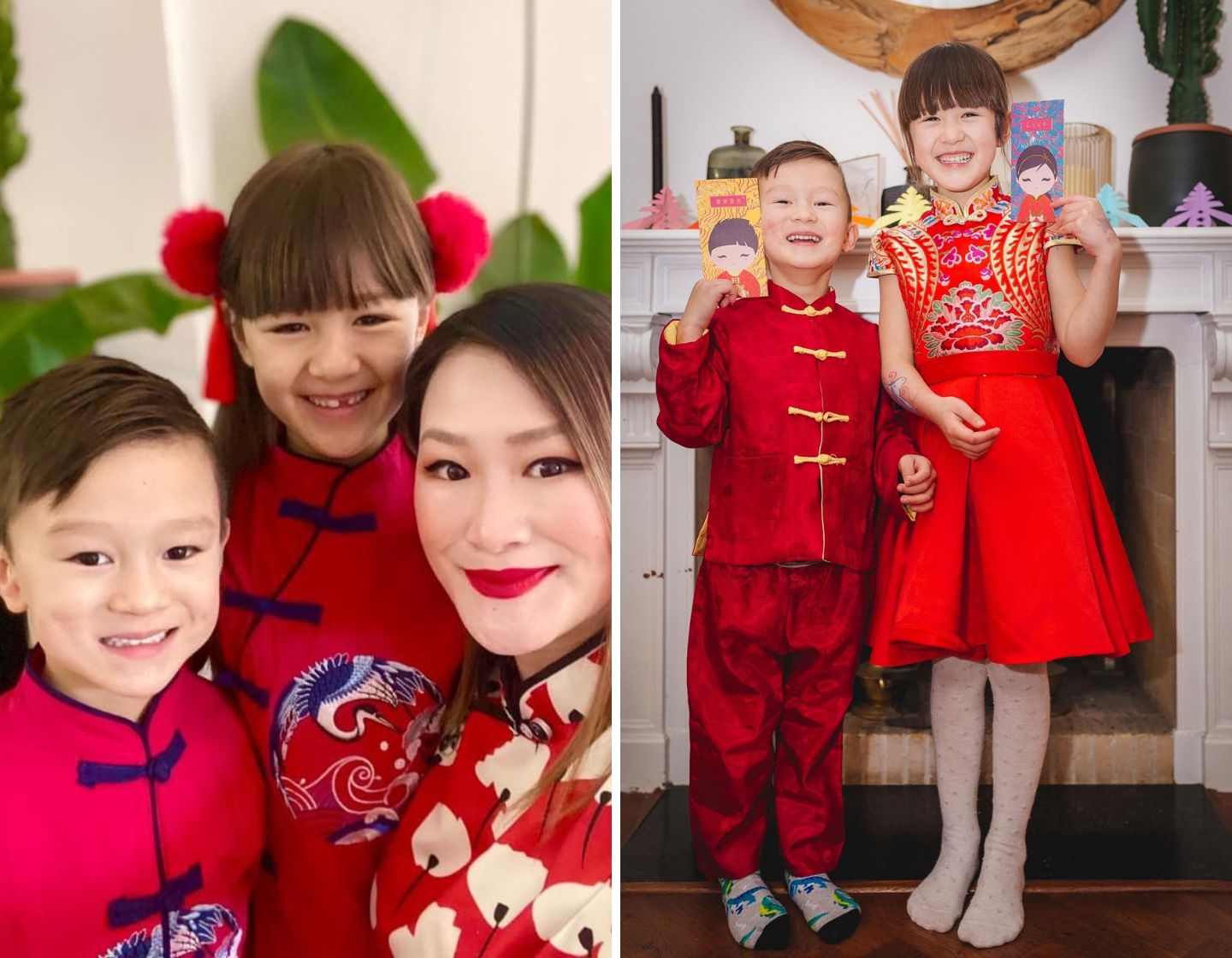
Can you talk us through your career pre- and post-baby?
I am a MOE-qualified Chinese teacher and taught Chinese in a Singapore primary school for seven years before moving to the Netherlands with my then four-month-old daughter. I was also managing the Art department and was lucky to have wonderful school principals who trusted me and gave me a lot of freedom and support to revamp the curriculum, hire teachers, manage the Art budget, and come up with different initiatives. I learned so much during those years. It was tiring but also really fun and fulfilling. Just as I found out that I was pregnant, I also received news that I had been accepted into the Master of Education (Curriculum and Teaching) programme at National Technological University (NTU)-National Institute of Education (NIE) and was gutted I had to give that up.
I took a break from work with the move to the Netherlands and the birth of my daughter. I was fortunate to be in a position where I could be a stay at home mum (SAHM) for several years and be with my children during their early years. It wasn’t an easy period but I am grateful to be there for every single milestone. It was during this time that I managed to build a close community of friends and had the time to take the children around to explore the city which helped us feel more settled and integrated.
When my younger child started primary school, I started exploring the option of going back to work. I noticed that Chinese schools in the Netherlands follow a very archaic curriculum and teaching methodology. There is a huge focus on rote learning, spelling tests and exams which unfortunately kill the joy of learning. I signed my daughter up for one such school and could see her interest wane. I want my children to love learning Chinese and strongly believe that learning can be done in a fun, creative way rather than via rote learning. Surprisingly, there are no play-based Chinese schools in the Netherlands so I decided to start my own.
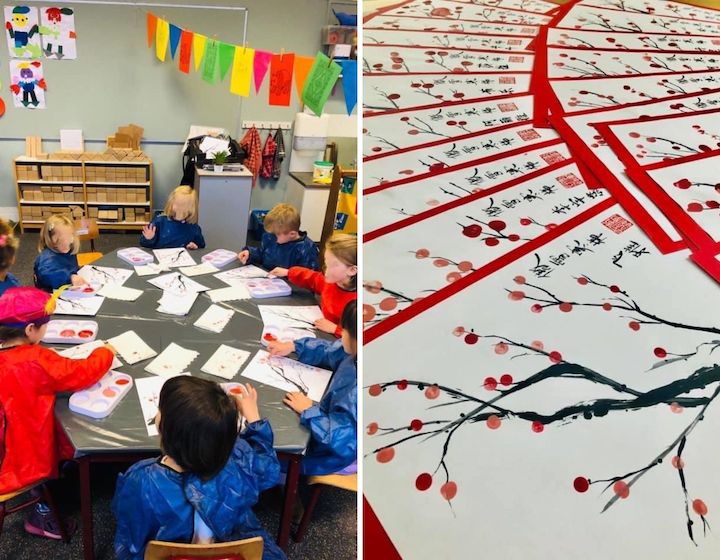
I started Mandarin Tree Chinese School right before Covid-19 hit the world. Together with eight students and my two children, we went through a long period of school closures, online lessons, and outdoor lessons. I remember teaching classes at the park with picnic mats and a portable blackboard. The children learnt to write Chinese characters on the ground with chalk, went scavenging for flowers, grass, leaves, and stones during our “nature-themed” lesson. It was hard with voice projection in an open space and worksheets being swept up by the wind but it was such a fun experience! Everyone had a good time! I remember preparing learning packages for the children and driving around to deliver the materials to their doorstep so that they could still have hands-on activities during their online lessons. It was a big learning curve teaching online but it also changed my career in a way I would never have imagined.
With the uncertainty that Covid-19 brought, I decided to teach all my lessons online and opened up my classes to children all over the world. After almost two years, this humble little school has about 200 students from all over the world. Every lesson, I still think how amazing it is that children from different continents of the world can come together to learn Chinese at the same time! I have never met my students in person but I love every one of them! Many parents have also become friends! We have a really lovely community of people bound together by a single desire for our children to enjoy learning Chinese. Taking the classes online also opened up a lot of opportunities for me. I have been commissioned to produce videos for Singapore’s National Day and have recently been invited by a primary school principal in Singapore to conduct online professional development workshops for Chinese teachers in her school.
Favourite kid-friendly restaurant in Haarlem?
Located between a forest and the dunes, Kraantje Lek is our favourite kid-friendly restaurant. It is not exactly in Haarlem but it’s close. This 1542 building was recently renovated and has a beautiful playground where children can spend hours playing while you have your meal in peace. They have an outdoor seating area with a cosy fireplace so you’ll be able to keep an eye on your kids during the meal, even in winter. We normally combine a visit to Kraantje Lek with a walk in the dunes or the forest nearby!
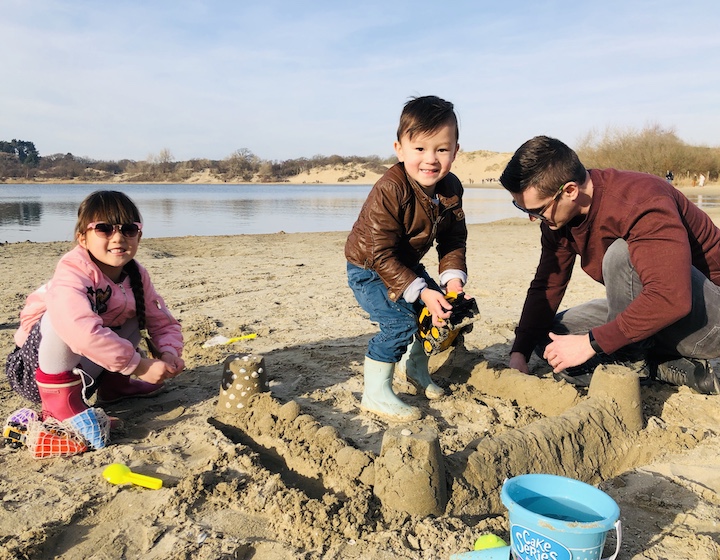
Top five places in or around Haarlem you would recommend to parents travelling with kids and why.
I know you asked for five places but there are so many great places, I can only whittle down my selection to six!
Zuid Kennemerland National Park – The dunes are our favourite place to be! I would recommend cycling to the dunes, taking a short walk to Het Wed and swimming in the lake when the weather is nice. We normally pack a picnic lunch and spend our whole afternoon there. The kids love rolling down the steep sand dunes, digging trenches, climbing trees and cooling off in the lake! It’s their idea of heaven. We would end our day at the visitor centre at the Koevlak entrance where they have a nice exhibition. Next to the visitor centre is a lovely cafe where you can have a cup of coffee and watch your children enjoy themselves at the nature playground. We like to cycle through the dunes on the way home. If we are lucky, we would see Highland cattle, horses and sheep.
Olmenhorst – We like to pick apples and pears from the orchard here! It can’t get any fresher than this! There is a wonderful playground and a cafe too. During the weekends, there are often pony rides, archery and market stalls.
Tulip Fields in the Bollenstreek – The Netherlands is famous for tulips and blooming tulip fields are breathtaking sights in Spring! I would skip touristy Keukenhof and head to the farmers’ fields for the most authentic experience. Going on a cycling tour is a lovely way to see the tulips. You should of course be respectful and not walk into the fields as this may destroy the tulips. There are also places like The Tulip Barn where you can pay to enter the fields to take photos. It is wise to check the Flower Map for the blooming status of the flowers in each field before you go!
Teylers Museum – This is the oldest museum in the Netherlands! It is an art, natural history and science museum. My kids love looking at fossils, minerals and cool scientific instruments there.
Spaarne – I think that a boat ride along the Spaarne, which runs through Haarlem, is one of the best ways to see Haarlem. Boat rides are always a hit with kids! We normally prepare some finger food and drinks for the boat ride. You can even rent an electric boat and sail it yourself! Booking can be done online at Greenjoy. You only have to activate the boat with your phone and off you go! There are no life jackets on board so you might want to get some beforehand. I would combine this with a visit to St.-Bavokerk in the centre of Haarlem! The St.-Bavokerk is a Reformed Protestant church and former Catholic cathedral located on the central market square in Haarlem. It is the most iconic landmark in Haarlem.
Kinderboerderij de Houthoeve – We love petting zoos and this is the best one in Haarlem! Children are free to touch the animals such as goats, cows, horses, donkeys, pigs, and chickens. There is also a wonderful playground and a cosy cafe nearby!
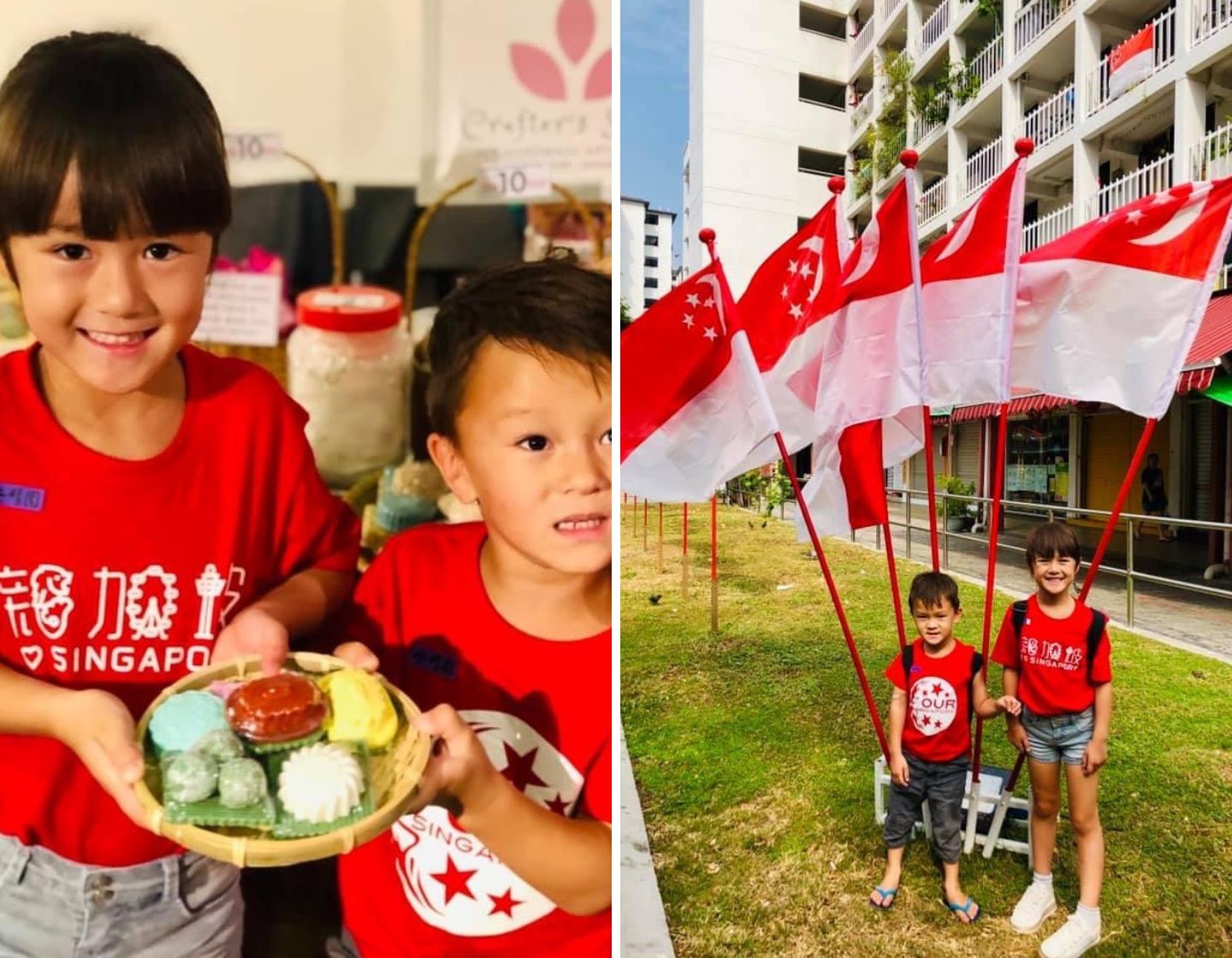
Is there something that you do to keep your children in touch with their Singaporean roots?
My daughter once told me that she is half Chinese Singaporean, half English and a lot of Dutch. I am really glad that my children have assimilated so well in the Netherlands, but it also made me hold on tighter to our Chinese and Singaporean roots. I know that if I don’t put in effort, these roots could easily be lost. We celebrate every single festival such as Mid-Autumn Festival, Chinese New Year, Dragon Boat Festival, and Lantern Festival together even though no one else around us is celebrating. It is hard creating a festive atmosphere that only exists within our house but we try our best!
Before we moved to the Netherlands, I would never imagine myself making mooncakes, rice dumplings, glutinous rice balls, bak kwa, pineapple tarts, radish cake, hokkien mee, laksa, kuay chap, bao zi and other local foods from scratch. I think it is very important for my children to identify with their Singaporean and Chinese cultures! I also want them to be proud of who they are. Racism is more apparent when you are a minority in the country. If they are not proud of who they are, they won’t be able to stand up for themselves. I also think that education and exposure are key to fighting racism.
I have been to my daughter’s class to introduce Singapore on International Day. I talked about the different races in Singapore, the languages that we speak, did a blossom painting with the children, and taught them a Chinese song. For Chinese New Year this year, my kids gave their classmates red packets with chocolate coins in them. They also recorded a video in Dutch, narrating the story of Chinese New Year, which the teacher played in class. Pre-Covid-19 times, we used to organise get-togethers during Chinese New Year, Mid- Autumn Festival and Christmas with our Singaporean friends living near us.
I was commissioned by Singapore Global Network to produce storytelling, games and craft videos for Singapore’s National Day last year. My children were not in the video but they were really excited and very much involved in the process. We also watched the National Day parade together as a family! The Singapore Embassy in Brussels, Belgium kindly sent us National Day gift packs so we had our flags and little Singapore-themed presents. The kids loved them.
By the way, my kids can effectively use Singlish like “lah” and “kiap” so they are very much in touch with their Singaporean roots!
Best souvenir one could bring back from Haarlem
– for a child:
Nijntje toys. I think a lot of people don’t realise that Miffy, or Nijntje as she is known here, is from the Netherlands!
– for a mama friend:
Jopen Bier. Beer brewed in a former church in Haarlem.
What do you find is the hardest part of being a mother living in a foreign country?
Not being able to express myself in Dutch effectively is the hardest part for me. I sometimes have to use Google Translate to communicate with my children’s friends when they come over for a playdate. Going for class drinks with other parents can also be awkward when the whole group has to switch to English just for me. In situations where I need to stand up for myself or my kids, I find it frustrating that my response can’t be as quick or as articulate as I want it to be. One of my 2022 resolutions is to improve my Dutch!
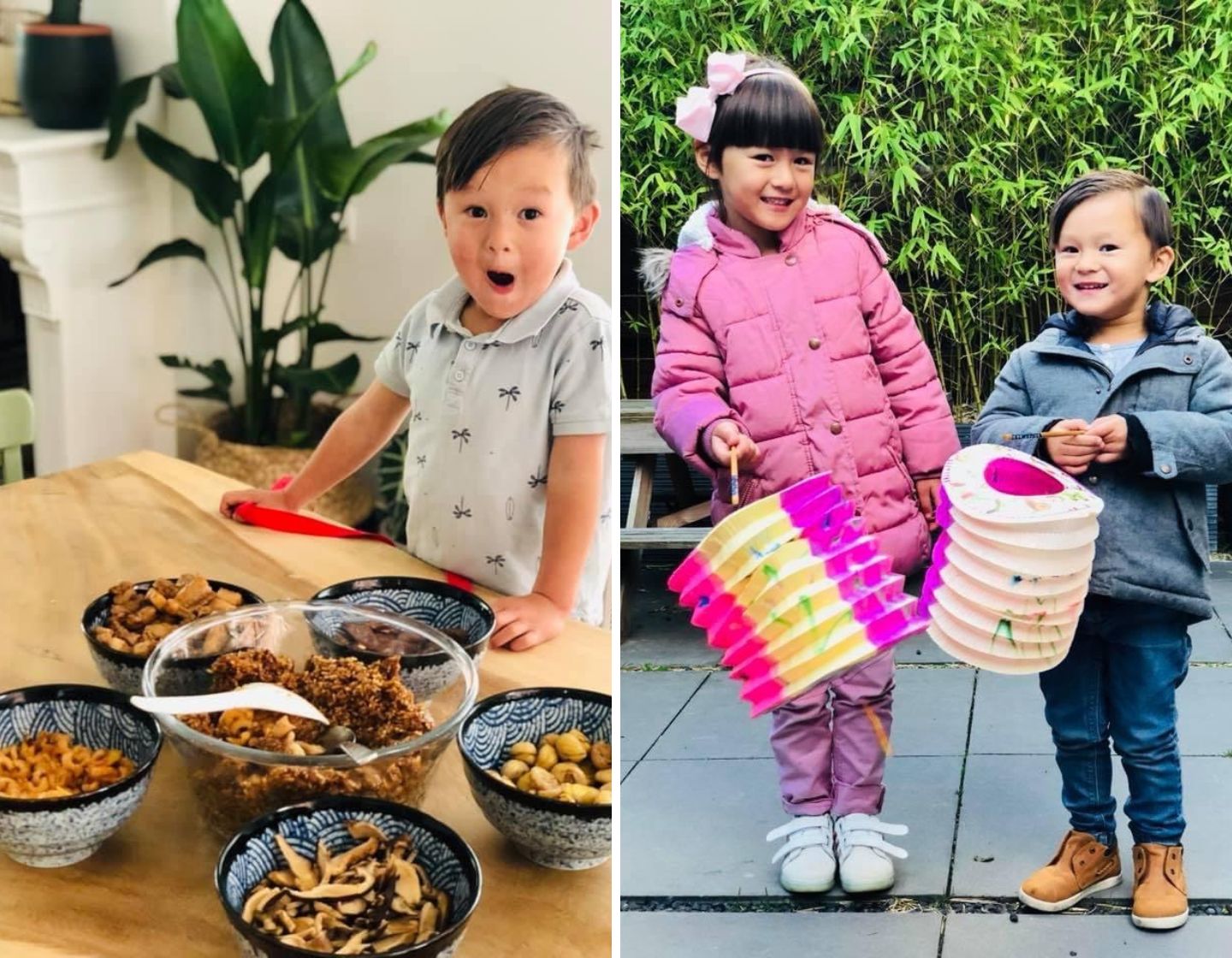
On raising multilingual children …
My children are trilingual. They go to a local Dutch school and learn all their subjects in Dutch. Most of their friends speak only Dutch so they socialise in Dutch. My husband is English and our children are brought up speaking English. Living in the Netherlands without family and barely any Chinese people around, I am solely responsible for their Chinese acquisition.
You would think I would have done everything right when it comes to teaching my children to speak Mandarin since I am a Chinese teacher. I made a mistake and I am not afraid to admit it because I hope someone will learn from my mistake. If I could turn back time, I would use the One Parent One Language (OPOL) approach, i.e. I would speak only in Mandarin to my children while my husband speaks in English to them.
I was worried about my children fitting in, not being able to understand the teacher and not being able to make any friends because my husband and I don’t speak Dutch so we focused on their Dutch education, immersing them in Dutch songs, stories, shows, etc. During their playdates, mainly with other foreign kids, we would speak in English. When we get home, we would use English so that their father would be involved in the conversation as well. Chinese language naturally took a backseat. It is hard to be motivated to speak a language that no one else speaks around you!
I soon realised that my son was very resistant to Mandarin and decided that I needed to make a change. I started speaking to my children only in Mandarin. My son refused to try and listen to what I had to say and definitely did not bother replying to me. I was dejected and had to put in a lot of hard work. Every time he spoke to me in English, I would insist on translating his sentences into Mandarin. It took me a whole year of speaking Mandarin to the “wall” before that “wall” replied in Mandarin! I may or may not have cried at that moment.
It was a breakthrough that led to his willingness to start speaking in Mandarin. He can now express himself in Mandarin (we are still working on it) and he reads and writes at a level above his peers. I am incredibly proud of him! I am convinced that it is never too late to start. Persistence, consistency and making it fun are key to effective language acquisition! It is amazing to see how easily children pick up languages!
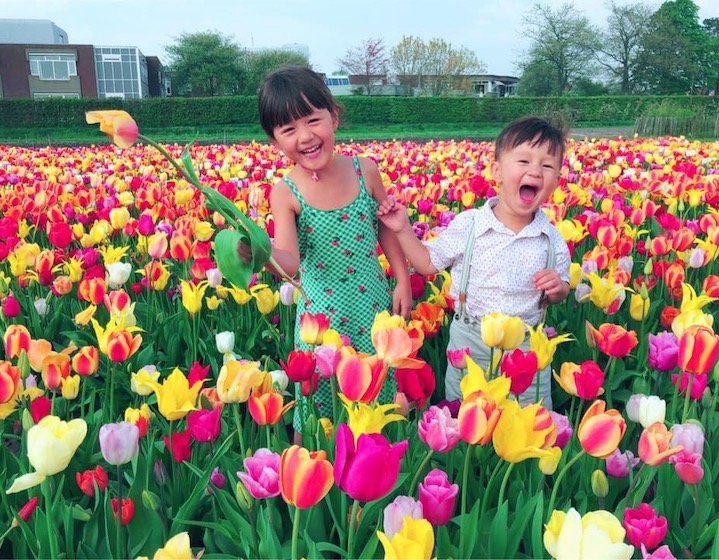
What do you always bring back from Singapore for yourself and for your children?
Chinese storybooks, Yu Yee Oil, bak kut teh and Emperor Herbs Chicken spice packs, cereal prawn cereal mix, pork floss, and Chinese herbs for making soups.
Tell us about your go-to recipe for your family.
Honestly, anything that goes into the Instant Pot to make my life easier and buy me time with my family! Our favourites include Taiwanese beef noodle soup, Vietnamese pho, chilli, and Chinese herbal chicken soup with mee sua.
What’s the one thing you would miss about Haarlem if you moved away?
Our friends for sure! It is true that it takes a village to raise a child! Our community of friends is like family to us! I know I can always count on them for anything!
What is the first thing you do each time you come back to Singapore?
This is going to sound very strange but the first place we go to after settling down at my parents’ house is the library to borrow Chinese and English books. In Haarlem, English books are extremely limited—at most one level on a bookshelf—at the library and there are of course no Chinese books so it is a treat to be surrounded by so many English and Chinese books at the library here.
What do you dread most if you are moving back to Singapore?
People everywhere.
How do you think Singaporeans can benefit from living overseas?
Living overseas pushes you out of your comfort zone and opens your eyes to a world of diverse cultures, knowledge and experiences. It is a growth experience that everyone should try at least once in life. It also makes you realise that the grass is not greener on the other side and there will never be a perfect patch of grass.
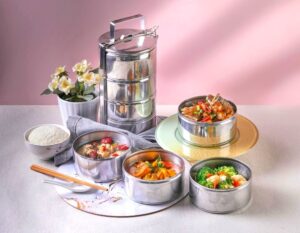
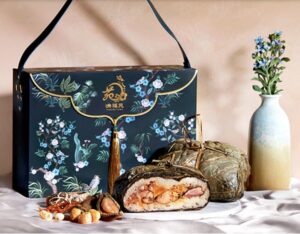
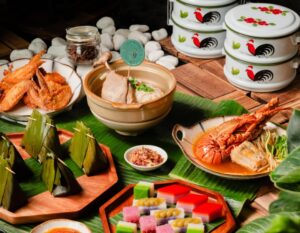

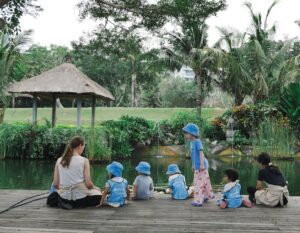
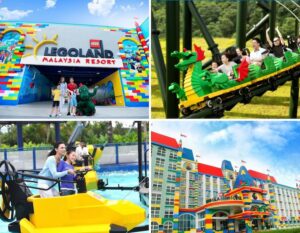
 View All
View All
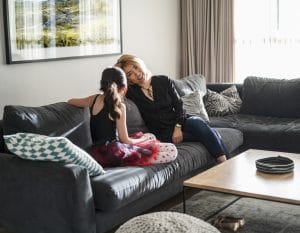


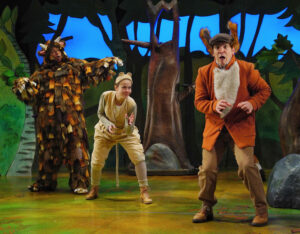
 View All
View All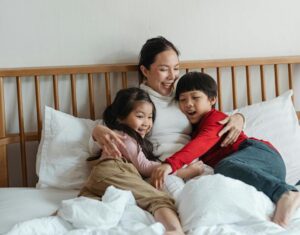
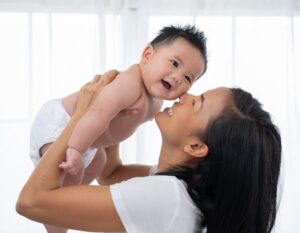
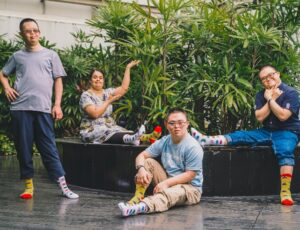
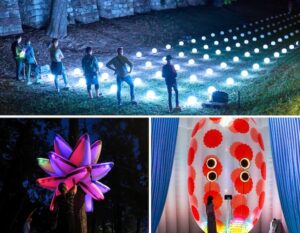

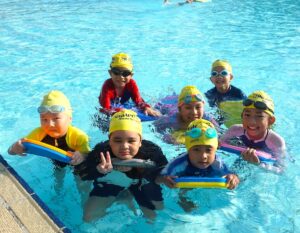
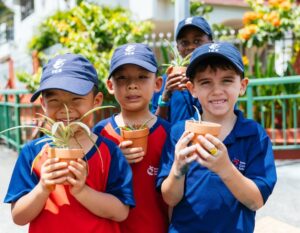
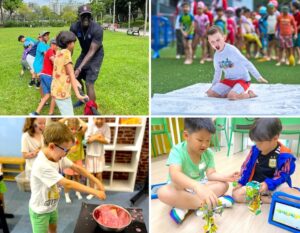
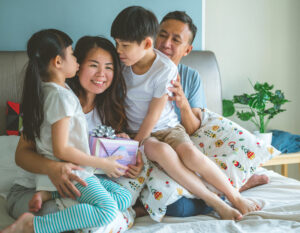
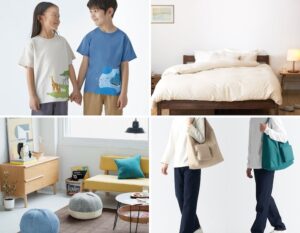
 View All
View All